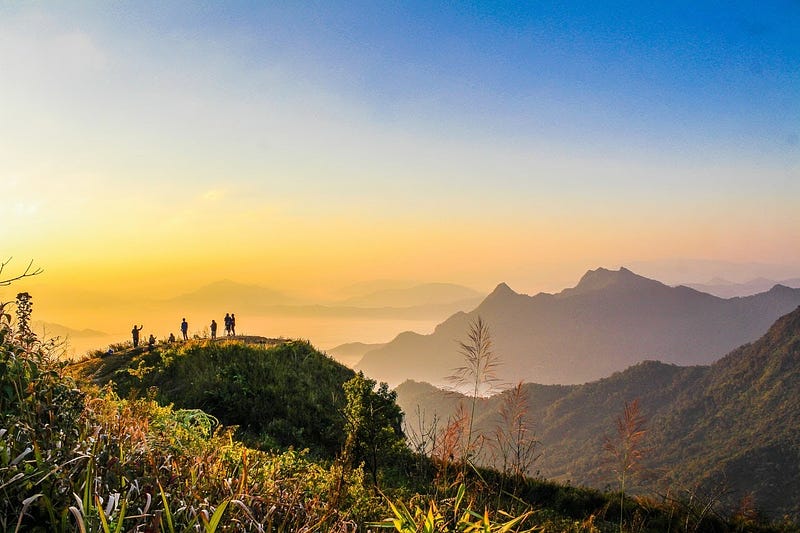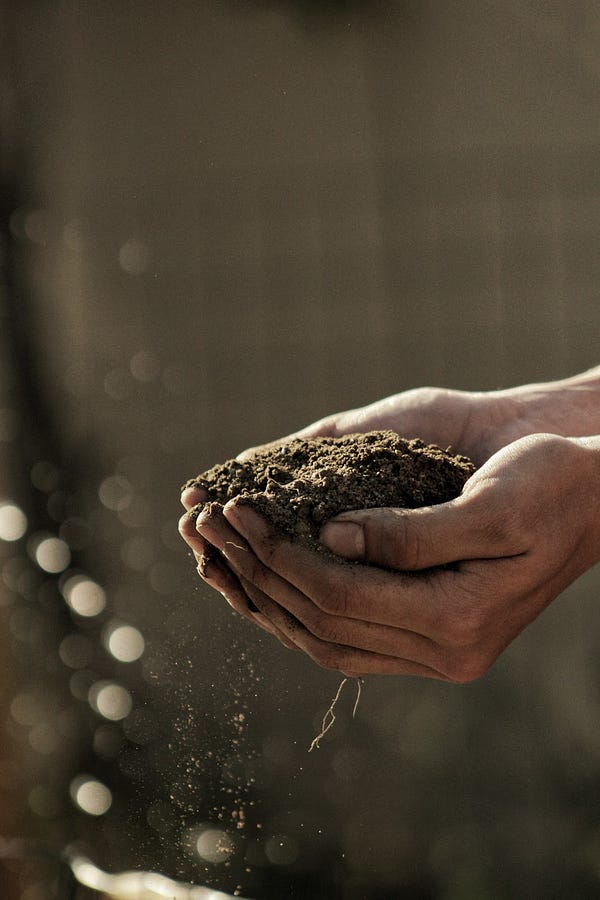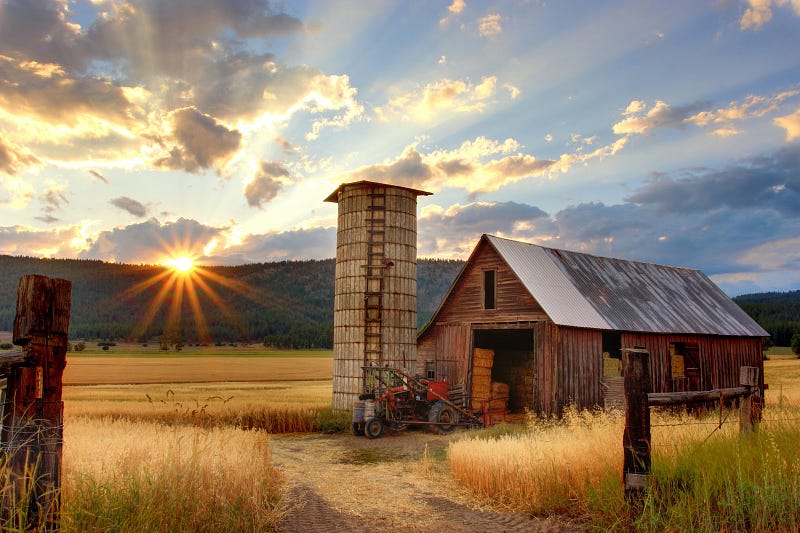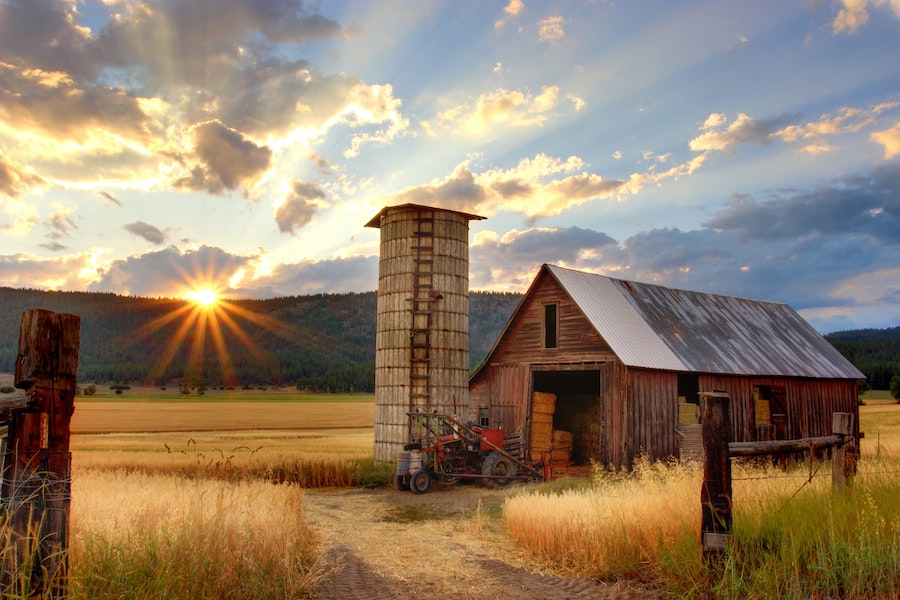How everyone can regenerate soil for a brighter future

Mother earth — the essence of our being — the source of our DNA — the origin of life on our planet. Is this worth protecting ?
Before we can even consider planting new seeds into fertile soil, we need to think deeply about the soil we’re planting it into. Is it healthy ? Does it build a good base for future generations ? What needs to be done to regenerate it ?
Industrial agriculture uses chemical fertilizers that create death soil. The good news: everyone can breathe new life into soil exhaustion with simple techniques used for thousands of years.
This article gives you all the information about the reasons we need to regenerate soil, what we can do about it and how everyone can start in their own kitchens with bokashi composting.
What is soil made of ?

Our climate creates soil by weathering and the dissolution of rocks, along with a mix of organic matter, liquids and living organisms such as bacteria, fungi and algae: a slow, but continuously changing biomass that creates the air we breathe.
It is the material of earth’s surface. It is the base of everything. We need soil to plant our crops and feed our world. But what happens if climate changes ?
We will have to fight drought. We will have to adjust to a changing environment, and we will have to reinvent agriculture. Nevertheless, before reviving the systems of farming we need to understand the root cause of the problem.
What happened to our soil ?
It all began in the middle of the 20th century when the industrial revolution was in full swing and modern, large-scale agricultural practices began to appear. The world’s population began to shoot up/rise/increase/grow rapidly — the number of human beings on the planet doubled since 1970.
Additionally, food supply chains had to adjust, and therefore mass production started. Chemicals and pesticides were used to ensure maximum growth and brought plants to their limits. Seeds were genetically modified to overcome plant disease.
However,not all farmers could afford to buy these additives.
Naturally, crops could not adjust fast enough, so chemicals were needed to feed the world. Diseases began to evolve and they in turn had to be treated in a fast and efficient way. Our entire ecosystem started to be out of balance and this is where we are today.
Profit is prioritised over human health, and we are losing topsoil at alarming rates — meaning we are losing the base of our existence.
However, there are simple techniques to reverse this trend!
Regenerating soil with organic small scale farming

The production, distribution and consumption of organic food follows the principles of a circular economy and therefore supports being in alignment with our natural surroundings.
By minimising soil loss and enriching the earth’s surface with valuable nutrients, we can retain more carbon than is depleted. Therefore, regenerating soil is a long term solution to removing carbon dioxide from the earth’s atmosphere and cooling down our climate.
Reviving our lives on planet earth and increasing soil resilience can be done by everyone. Small scale farming can even start in our kitchen.
Become a Farmer at home
We can create our own fertile soil nutrients at home. How ?
With Bokashi Composting — this is a Japanese way of fermenting food waste and preparing organic fertilizers for plants and producing a soil amendment.
This is how regenerating soil at home works:
- Buy a bokashi bin
- Place it in your kitchen
- Throw in your organic leftovers
- Add the bokashi bran
- Let the biomass ferment for 1–2 weeks
- Harvest the organic fertiliser
- Bury the fermented matter
- Regenerate soil
Composting around the world at home can dramatically reduce what ends up in landfills and rejuvenate our earth — consequently cooling down our climate.
Pioneers reversing climate change with healthy soil
First movers like Steward Brand who published the Whole Earth Catalogue in the seventies provided the basic guidelines on how to self sustain human health through holism including all the tools needed.
“When I was young, there was an amazing publication called The Whole Earth Catalog, which was one of the bibles of my generation … It was sort of like Google in paperback form, 35 years before Google came along. It was idealistic and overflowing with neat tools and great notions” — Steve Jobs.
Today, companies like Patagonia carry the message of the impact of regenerating soil across the globe and inspire others with stories about small scale farmers:
In a nutshell: soil is life and life is soil. We are all part of a cycle and this is what needs to be maintained for future generations.


Pingback: How to Recover Water Cycles - Wegozero